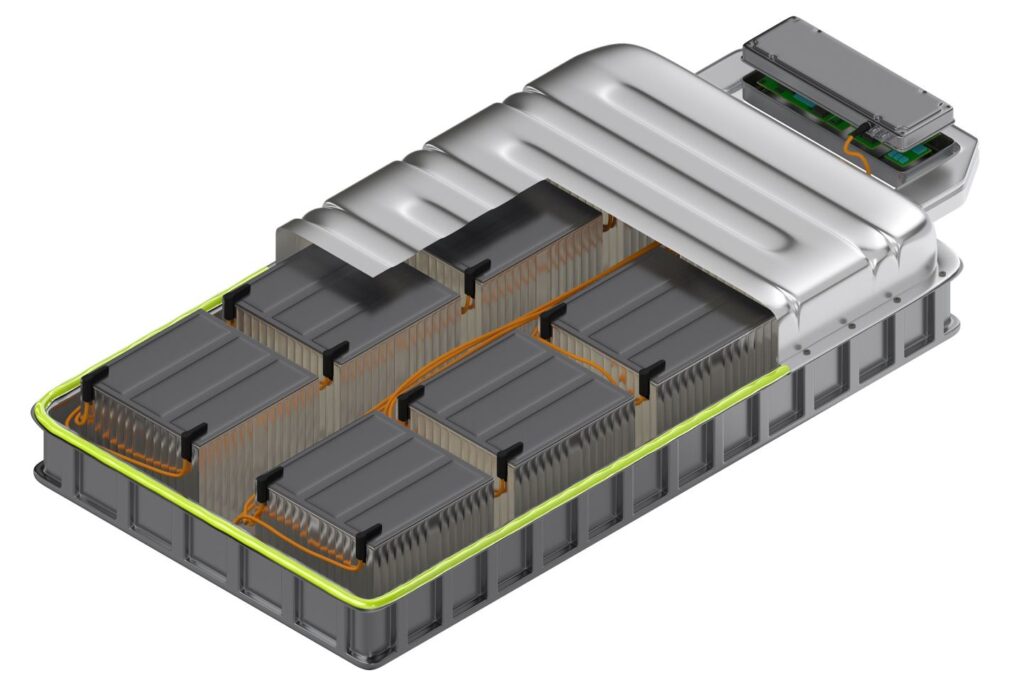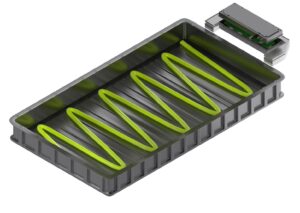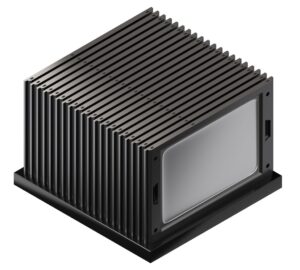
Bostik Pliogrip and SAF&FIT are unique solutions for thermoplastic bonding of battery packs.
Automotive and battery manufacturers need to address a wide range of challenges to ensure their electric vehicles can compete in a highly contested market.
These include improved safety, longer service life, greater range, fast charging, reliable performance, sustainable solutions, and reduction of costs. The core for any electric vehicle is the battery.
Arkema and Bostik are at the forefront of this technology, offering solutions all along the battery value chain, both inside and outside of the battery cell.
Automotive Industries (AI) visited Battery Show Europe to find out about the latest developments from Benoît Perrier, Global Automotive Director at Bostik and Manuel Heindrich, Manager Sales at Polytec PT.

AI: What battery technology is provided by your parent company, Arkema?
Perrier: Arkema is a provider of high performance specialty materials, which includes solutions for cell interiors and exteriors.
Inside the cells, for example, Arkema offers Kynar® to bind electrodes, and we have a comprehensive range of polymer coatings which form electrically insulated material for module and pack.
Externally, there is a range of thermal conductive adhesives which provide heat transfer and structural perforamance.
We are continuing to develop expertise in battery technology to help our customers meet the meet challenges to improve battery range, safety, and efficiency, while reducing cost and enabling recycling.
AI: Where does Bostik fit into the battery market at present?
Perrier: Bostik technology is currently focused on cell to cell, but we are expanding the range by providing the adhesives required to bond the cells to module and chassis
Our structural bonding solutions enhance safety throughout crash resistance and reduce weight and cost by moving away from mechanical fasteners, which leads to greater durability and increased process efficiency.
Then we are moving into the manufacturing of the module in the pack, and the integration of the pack in the chassis.
AI: How do the market trends for safety, sustainability and performance determine the need for new materials, components and manufacturing processes?
Perrier: So, the first thing is to align the needs of the market. Sometimes a solution which is very good for safety and performance is not necessarily good for sustainability.

An example is having a pack which is completely encapsulated in a foam – PU of Si foam for instance – which would provide safety and dissipation of ether. The problem is that you cannot repair or recycle the battery pack.
Our focus on sustainability means that we offer more than encapsulation solutions. We offer bonding solutions that provide protection in the event of battery failure and allow for repairs. Our solutions also enhance performance and reduce manufacturing costs with faster cycle times.
AI: How can manufacturers ensure that they have the right adhesives for the transition from the “cell-to-module” (C2M) to the “cell-to-pack/chassis” (C2P, C2C) concept?
Perrier: When designing a pack you need to combine two features – bonding, which influences safety and efficiency, and dissipating heat, which is where the thermal conductive adhesives come in.

XPU TCA 202 is a two-component, polyurethane-based adhesive specifically designed for heat dissipation in battery pack assemblies. It balances thermal conductivity with high mechanical strength while maintaining good levels of flexibility thanks to high elongation.
When it comes to chassis design you need to combine the two functions. That is why we are developing a chassis solution, knowing that we have to find a way to enable the dismantling of the unit.
AI: Bostik and Polytec PT launched a thermal conductive adhesives (TCA) range to accelerate innovation in battery design. How does the range address the challenge of thermal management in the latest Cell-to-Pack (CTP) battery design for e-mobility solutions?
Heindrich: The main challenges here are assembly speed, mechanical strength and conductivity. These three key requirements are very important for our customers.
The TCA range offers all three, with very good thermal conductivity combined with very low density and very high mechanical and bonding strengths on different substrates.
Overall, there needs to be a very, very close connection between the manufacturer of the material and the customer to ensure the selection of the right solution.
Some 80% of our materials are custom-made solutions, which shows that nearly all manufacturers require tailor-made solutions. Every battery solution has its own combination of materials, which need to work fast and be reliable.
AI: The battery pack is made from various metals or composite materials. How do you solve the challenge of adhesion to different substrates?

Perrier: We are seeing more and more use of what can be termed dissimilar materials. Take the cooling plate as an example. Traditionally, it was made of aluminum. Now it is aluminum and composite.
The challenge for the OEM is to make sure it can build the pack. Bostik can provide the required bonding technology. Pliogrip and SAF&FIT are unique solutions for thermoplastic bonding.
AI: How can Bostik battery pack sealants and adhesives contribute to improved battery system lifespan?
Perrier: The strength of Arkema is that we understand how the different types of chemistry inside the cells behave. The chemistry differs from one cell to another. We can provide the necessary solutions for existing and new cell chemistries.
AI: What do you see as Bostik’s future in battery technology?
Heindrich: We see Bostik as a full solution provider for all battery applications inside and outside the cells. We will continue to improve our range of thermally conductive materials and see a lot of potential for the production of cell modules.
Perrier: Bostik wants to be the de facto choice for innovation by our customers. For that we are developing not only adhesives, but also solutions and our team. When we talk about the team, we are very focused on making sure we have the right people to take our technology forward.













More Stories
Some Ways How Motorists End Up in Collisions at U-Turns
Maximise Margins with Proven PPF Tactics
Finding the Car Boot Release Button – Tips and Tricks